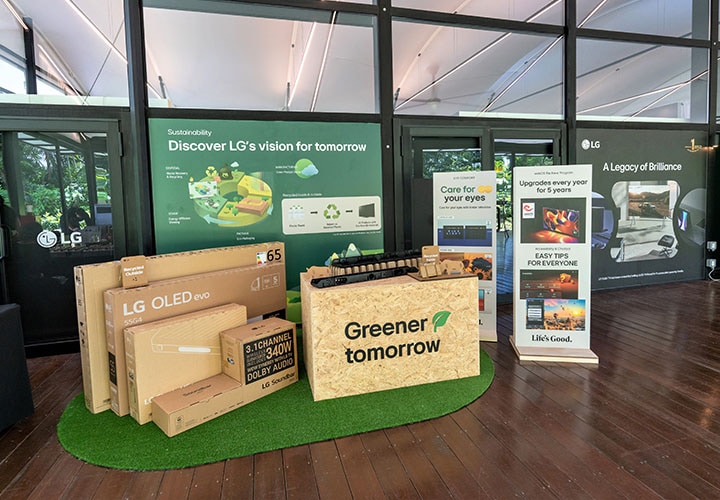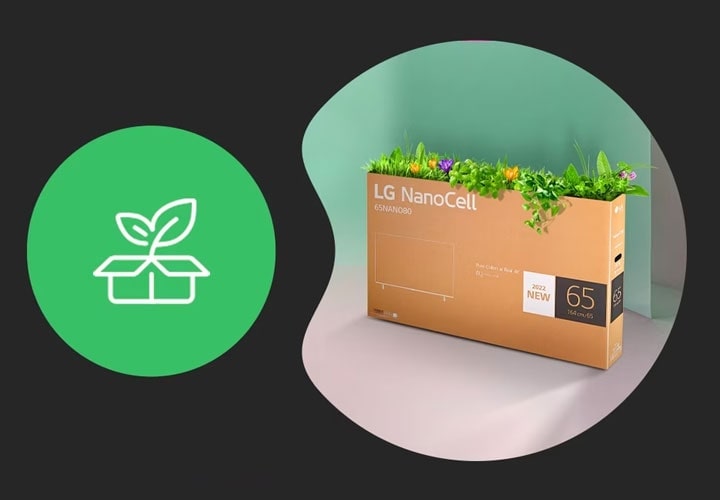We use cookies, including cookies from third parties, to enhance your user experience and the effectiveness of our marketing activities. These cookies are performance, analytics and advertising cookies, please see our Privacy and Cookie policy for further information. If you agree to all of our cookies select “Accept all” or select “Cookie Settings” to see which cookies we use and choose which ones you would like to accept.
Sustainability
LG’s strategy for the future: upcycling vs. recycling
Now, more than ever before, companies around the world are recognising how much they can do to help protect the health of the planet. As climate change and global warming continue to hit the headlines, there is a collective responsibility and LG Electronics has long been determined to seek solutions.
From leveraging state-of-the-art technology to cut carbon and greenhouse gas emissions to increasing energy efficiency across our products, such as LG InstaView™ with up to 32% less energy consumption1; the company is determined to do its part. Prioritising sustainable materials has given way to recycling and upcycling programs that benefit both the planet and consumers.
Upcycling vs. recycling
To better understand why upcycling and recycling are both important from an environmental perspective, let’s take a look at the differences.
What is upcycling?
An idea that has been used in fashion for decades, upcycling is the reusing of discarded objects or materials to create something new. Growing in popularity in the world of technology, it provides a new lease of life for products that have reached the end of their shelf life.
Some popular examples of upcycling include using fabric as gift wrap or making a bed frame from shipping pallets. Upcycling can also refer to repairing and refurbishing an obsolete appliance into a new product.
What is recycling?
A concept that has been around far longer, recycling is an industrial process that involves the destruction of waste in order to create something new. This could be the same product again or a completely different one which uses the same materials.
Most of us are familiar with recycling at home, but there’s more to it than tins and bottles. Keep reading to see how LG gives some products and materials a second chance at life.
Eco-minded packaging
While it is important to keep products protected when being transported, we didn’t forget about the packaging. That is why we are currently establishing eco-conscious goals to increase the use of paper and recycled materials, including:
• Using 100% environmentally conscious paper in packaging
• Packing small and medium-sized products in moulds made from recycled paper pulp
• Increasing the use of recycled materials throughout production
The details behind these goals are currently being established, as different products require different roadmaps and processes. But keep reading to learn more about what LG is currently doing when it comes to eco-conscious packaging.
Reusable and recyclable packing materials
Prescribing a more minimal use of materials and an increased focus on reusing and recycling, all LG home appliances, such as air conditioners, will soon incorporate eco-conscious packaging, this is demonstrated by LG reducing the use of expanded polystyrene by about 19 tons per year.
Some specific products have been certified for their use of recycled materials, such as LG OLED evo TVs that received certifications for the fourth consecutive year in 2024.2 LG soundbars are also produced with the planet in mind, and all new models have been made with recycled fabric since 2022.3
Paper-saving packaging
The amount of paper used to pack an outdoor unit has also been reduced from 2,950g to 300g, this is making a significant impact as around 85 tons of paper has been saved yearly through this project.4
Efforts for the future, from source to point of sale
Ultimately, LG endeavours to continue to improve its practices, from reducing the amount of carbon used when producing and disposing of products to using more eco-conscious materials to make products and packaging, as well as implementing methods to recycling reusable parts.
With every step of the process carefully considered, whether it's planning, packaging, delivery, use, disposal or the recovery of a product, LG wants to ensure the entire life cycle of a product is improved. And by doing so, the future becomes a little brighter.
**32%
Compared to the refrigerator with LG conventional reciprocating compressor. Based on VDE testing comparing energy consumption between LG model GBB530NSCXE and GBB530NSQWB. Energy consumption test based on ISO 15502 standard.
3 Our sound bar models (S95QR, S90QY, S80QR, S80QY, S75QR, S75Q, S65Q) use polyester jersey fabric that was made from plastic bottles, and has been certified using the Global Recycled Standard.



